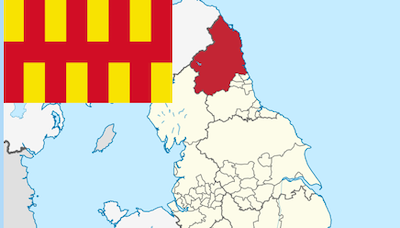Whin Sill at Spindlestone Heughs

-
Description
"View of the crags from below. The ice eroded crags of quartz-dolerite at Spindlestone Heughs show the usual vertical columnar jointing characteristic of the Great Whin Sill but appear unusually white in the winter sun. The rock weathers into moderately base-rich, relatively nutrient-poor, soils. The rock is extremely tough - hence the vertical crags - so that soils are thin and drought-prone. This combination of base-availability, modest nutrient stress and relatively severe physical stress leads to a distinctive vegetation and flora, not, as far as is known, matched elsewhere in Britain, and with a number of both national and Northumberland rarities. In fact several species have their only Northumberland localities on the Whin Sill. An audit of Whin grassland in Northumberland (May – July 2006) The geologist, Dr Ian Kille of Northumbrian Earth http://www.northumbrianearth.co.uk/ answered my question regarding the apparently silvery white colour of the rocks at Spindlestone Heughs. I quote his kind reply below: "You are absolutely right that dolerite is a really dark grey when fresh. The 'when fresh' is the key here; the Spindlestone Heughs have been thoroughly exposed to oxidation which lightens and turns the rock surface a paler brown colour. However, this is only part of the explanation as the principal reason the Heugh looks so pale is down to lichens growing on the surface of the rock in the wonderfully clean Northumberland air. If you were able to get up to the rocks and chip a bit off you would find the fresh dolerite to be dark grey."" Photo by Andrew Curtis, 2014. -
Owner
Andrew Curtis -
Source
Geograph (Geograph) -
License
What does this mean? Creative Commons License
-
Further information
Link: http://www.geograph.org.uk/photo/4276928
Resource type: Image
Added by: Simon Cotterill
Last modified: 6 years, 6 months ago
Viewed: 750 times
Picture Taken: 2014-12-12 -
Co-Curate tags









